Yellow Rimmed Ophrys,
Hebrew: דבורנית צהובת-שוליים, Arabic: الأوفريس أصفر الهوامش
| Scientific name: | Ophrys umbilicata subsp. flavomarginata (Renz) Faurh. | |
| Synonym name: | Ophrys flavomarginata (Renz) H.Baumann & Künkele, Ophrys latilabris (B.Baumann & H.Baumann) Shifman, | |
| Common name: | Yellow Rimmed Ophrys | |
| Hebrew name: | דבורנית צהובת-שוליים | |
| Arabic name: | الأوفريس أصفر الهوامش | |
| Family: | Orchidaceae, סחלביים |
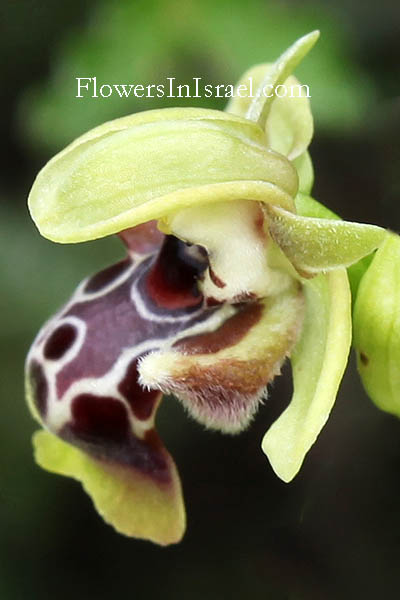
Location: Bene Zion Nature Reserve |
| Life form: | Geophyte | |
| Leaves: | Alternate, rosette, entire, smooth | |
| Flowers: | Unequaled color range | |
| Flowering Period: | March, April, May | |
| Habitat: | Mediterranean maquis and forest | |
| Distribution: | Mediterranean Woodlands and Shrublands | |
| Chorotype: | Mediterranean | |
| Summer shedding: | Ephemeral | |
| Protected Flower, צמח מוגן: | Yes |
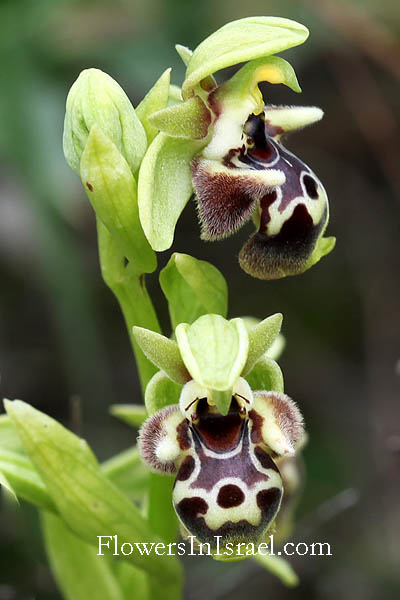
Location: Bene Zion Nature Reserve Derivation of the botanical name: Ophrys, oQ^us, "the eye-brow", referring to the furry edges of the lips of several species. The latin name for this group of terrestrial orchids. flavomarginata, yellow-rimmed. The Hebrew name דבורנית, dvoranit, from דבורה, dvora, a bee; the flowers bear a striking resemblance to a female bee. When male bees are tricked into mating with them, they get covered in pollen and spread it from flower to flower.
Pliny the Elder (23-79 CE), Natural History, Book XXVI, XCIII, was the first to mention 'Ophrys': "Ophrys dyes it (the hair) black , a plant like indented cabbage, but with only two leaves." 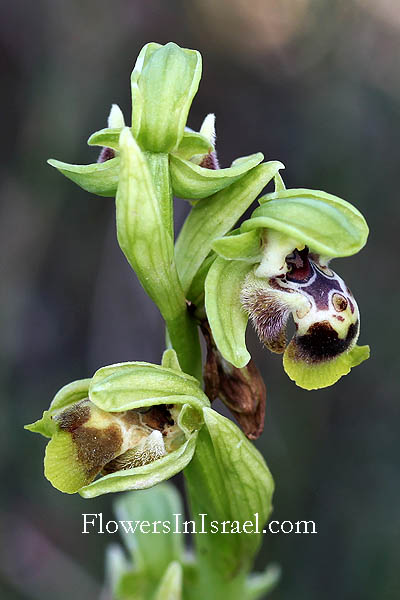
Location: Bene Zion Nature Reserve/sub> 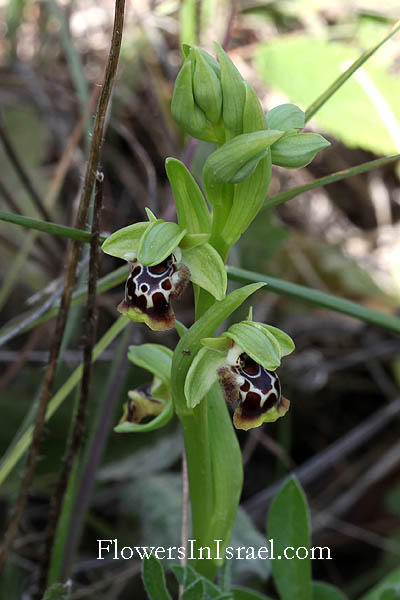
Location: Bene Zion Nature Reserve 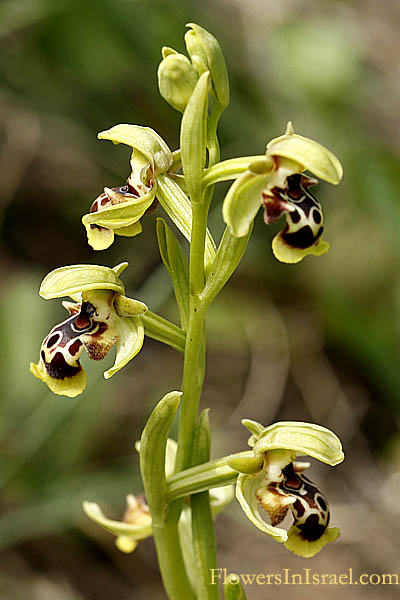
Location: Bene Zion Nature Reserve |